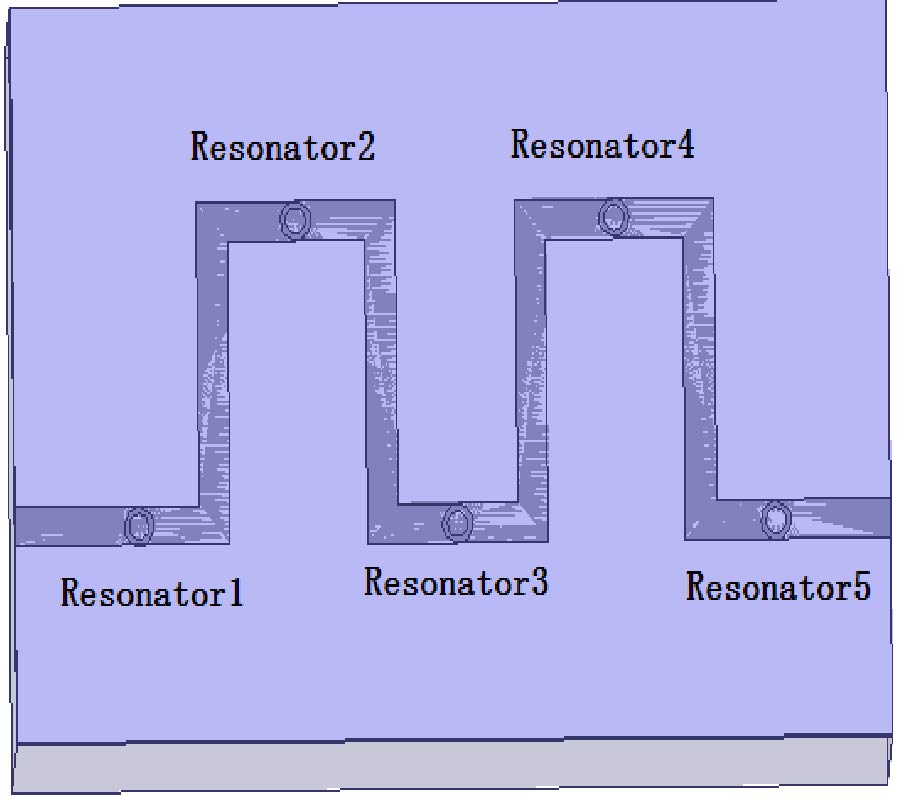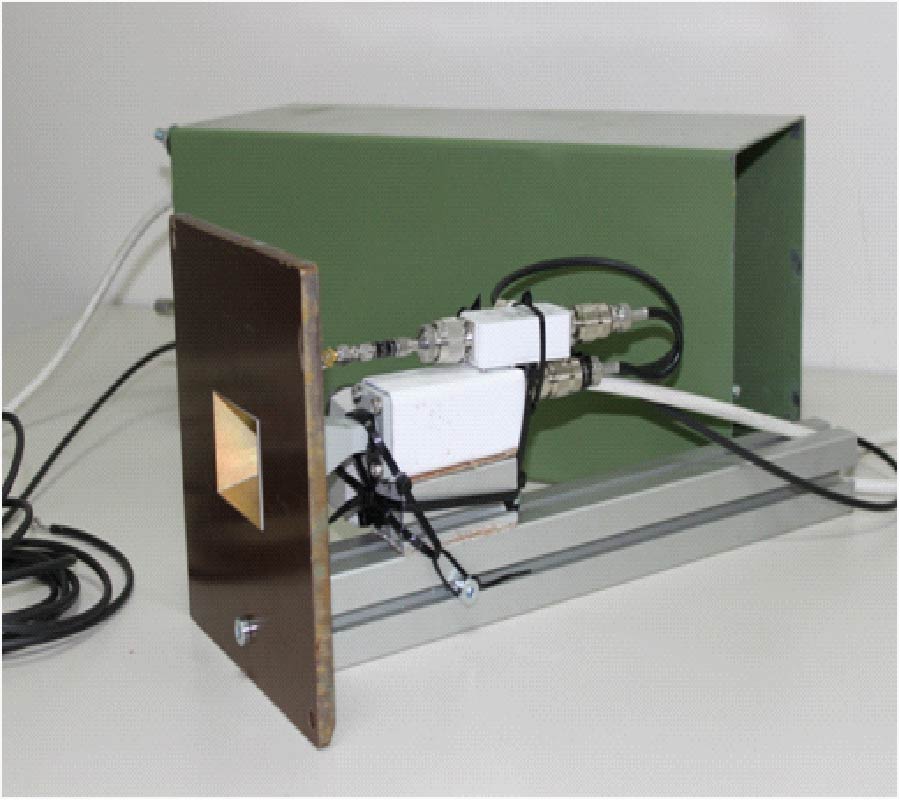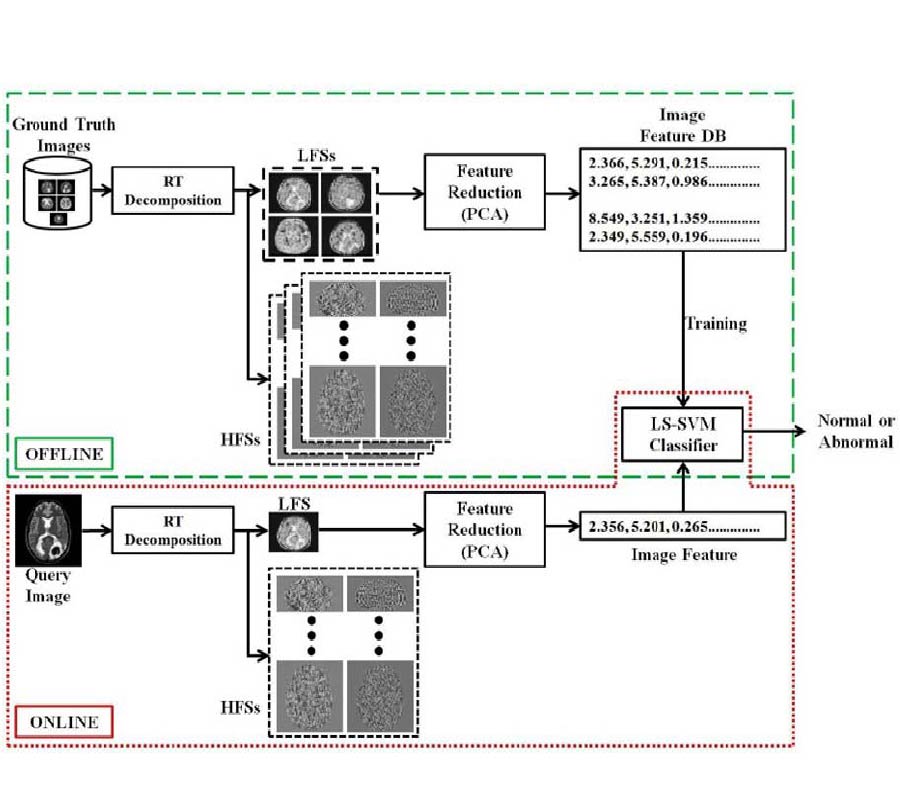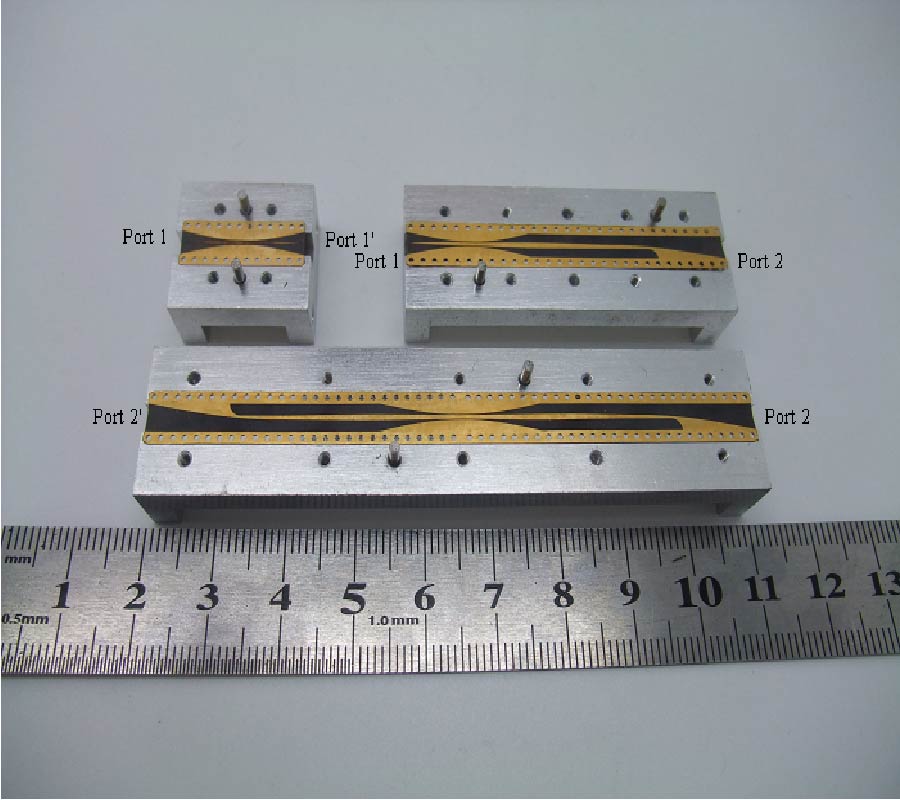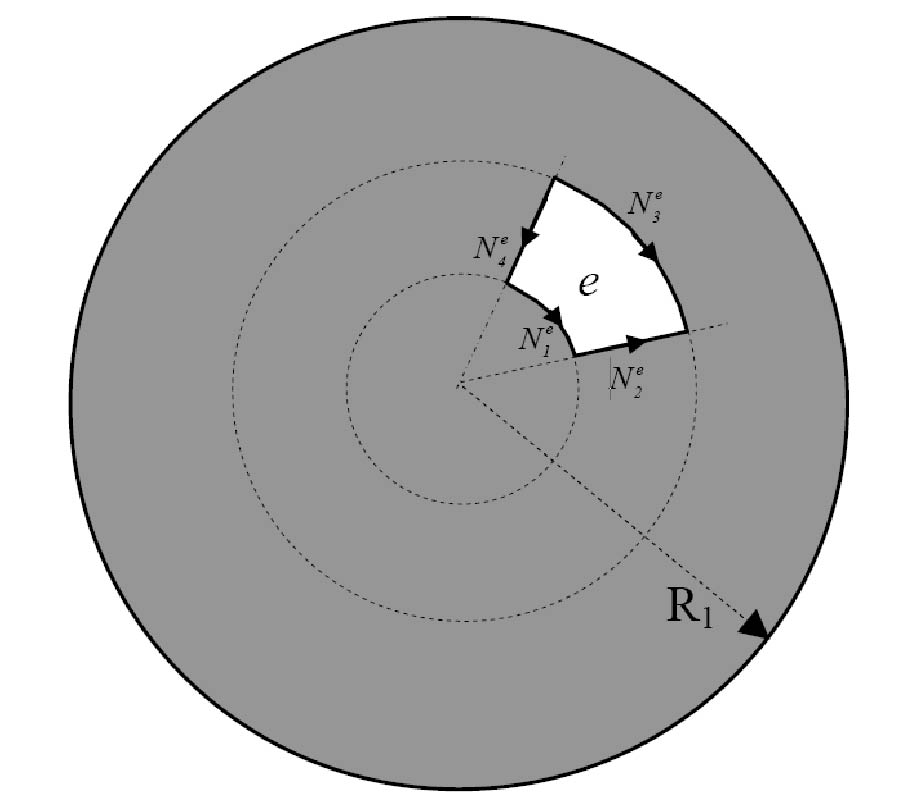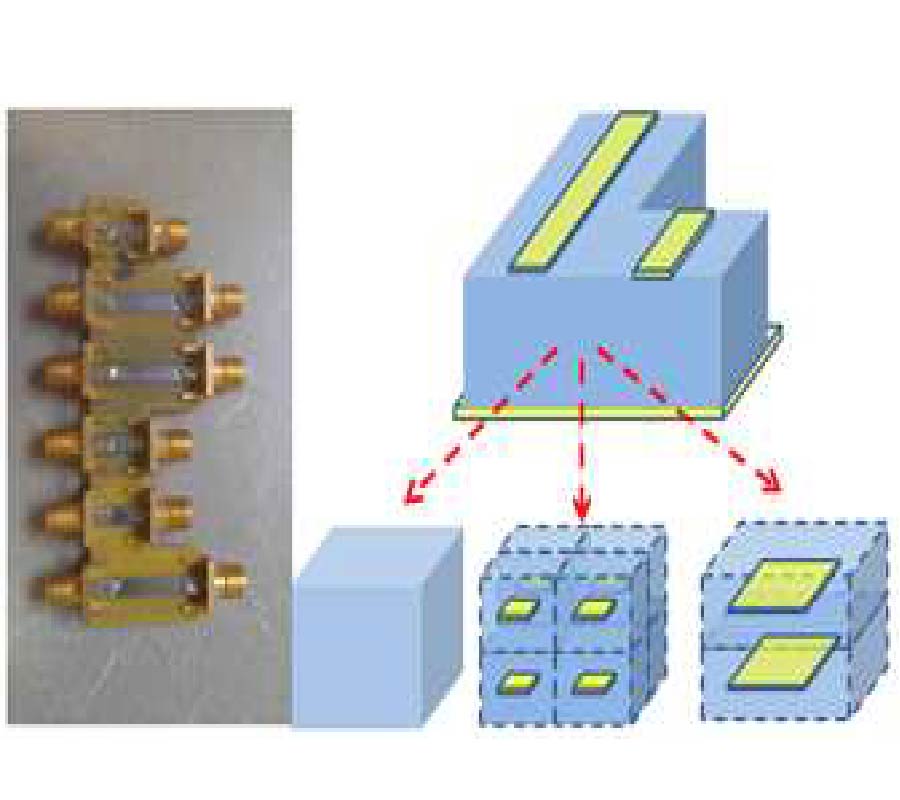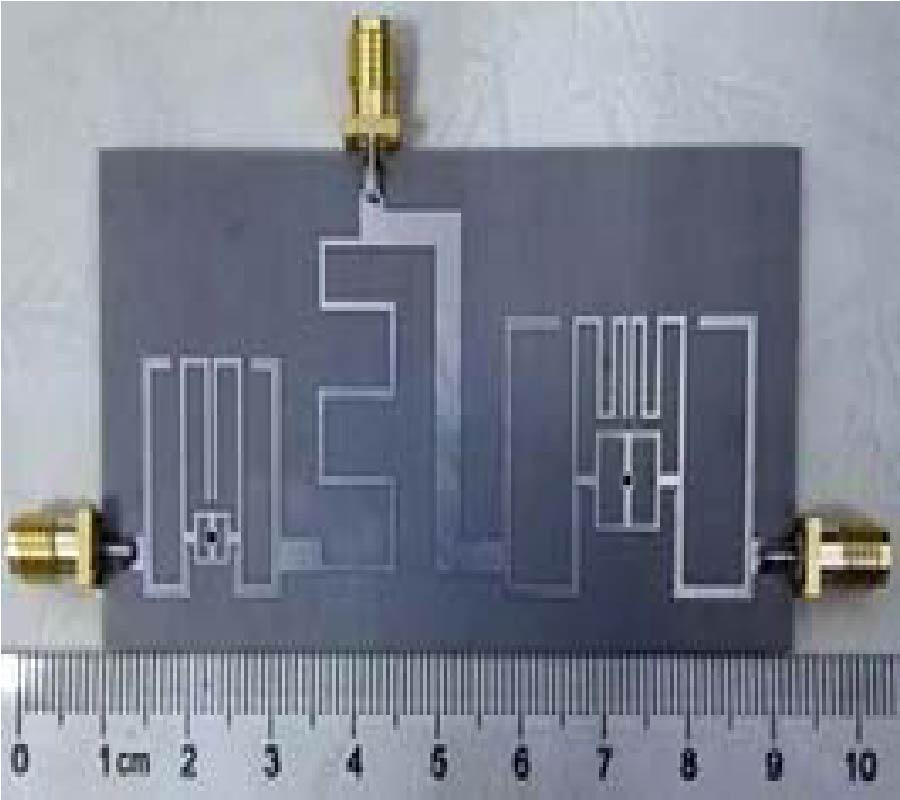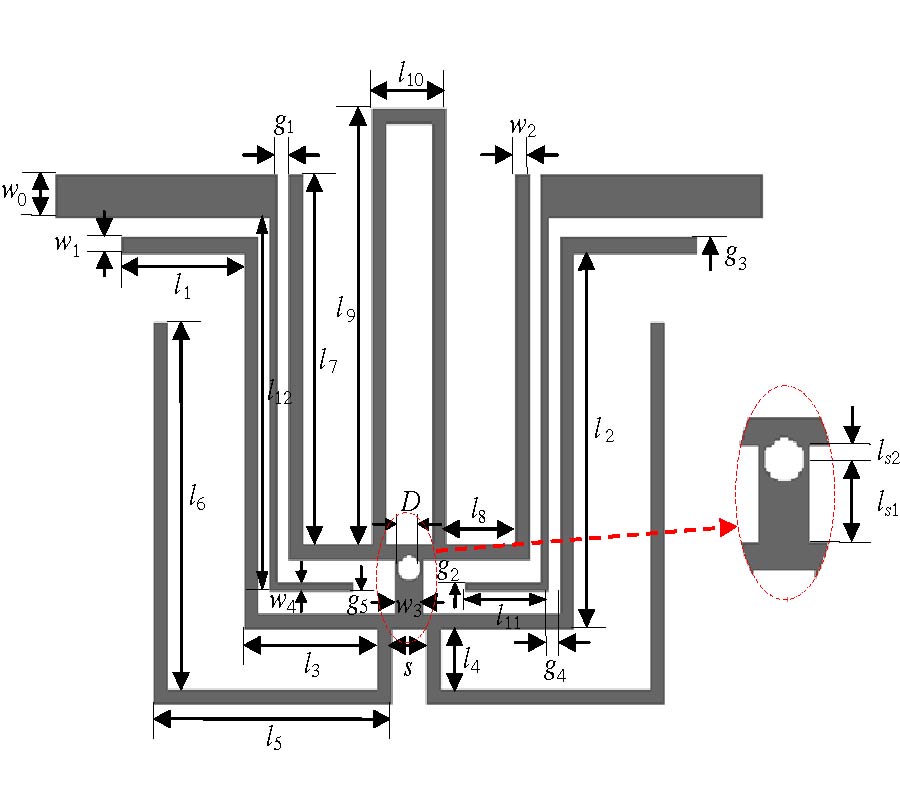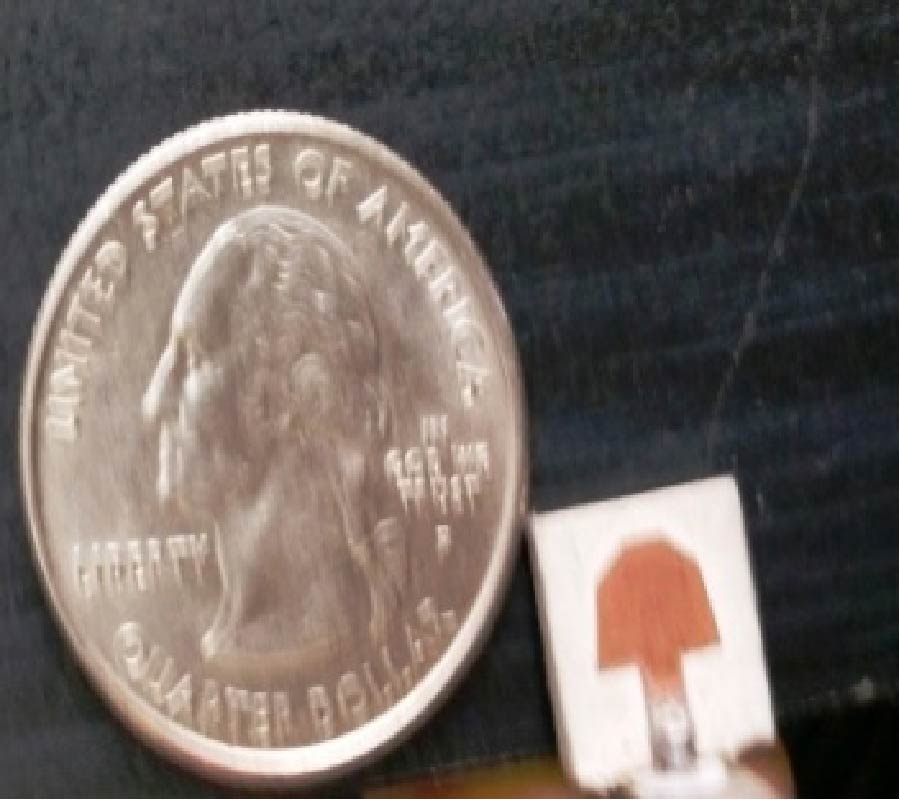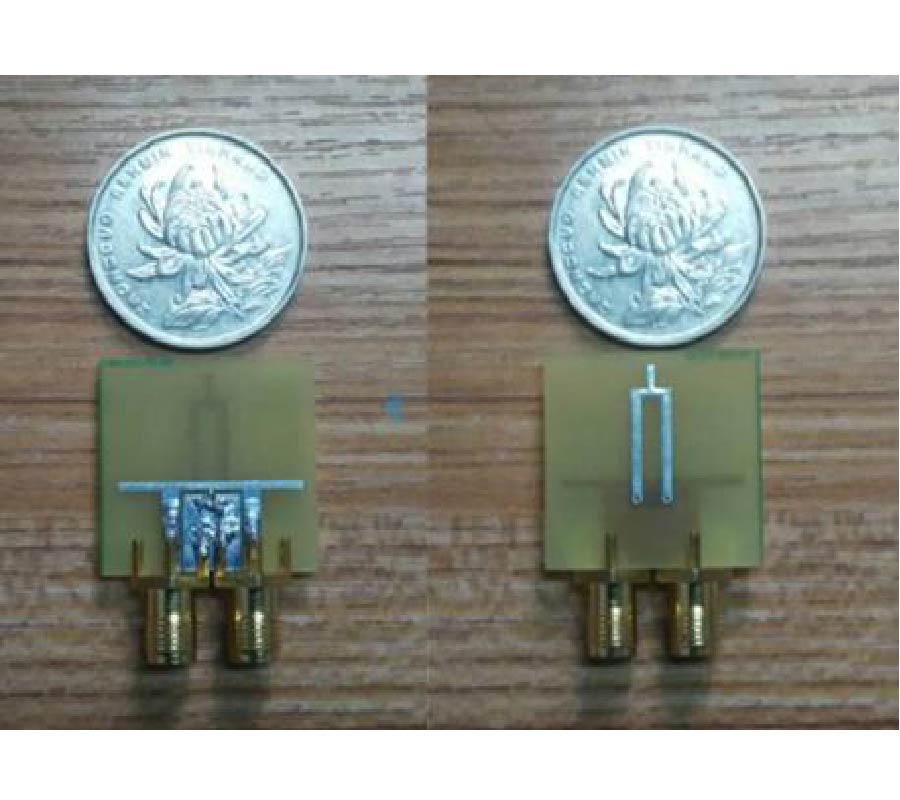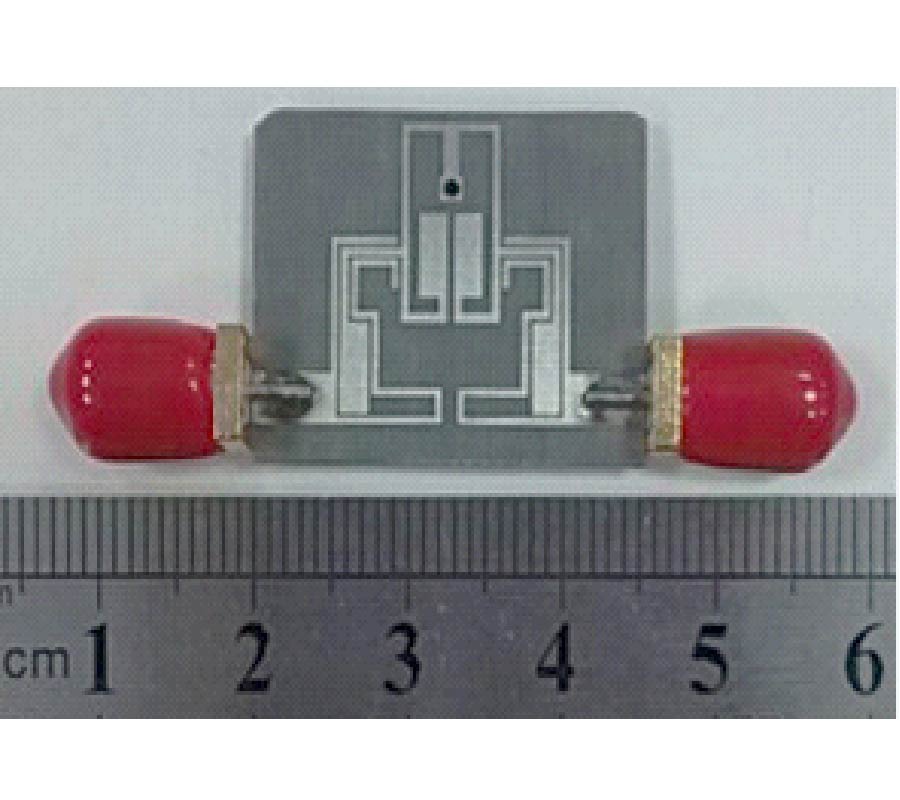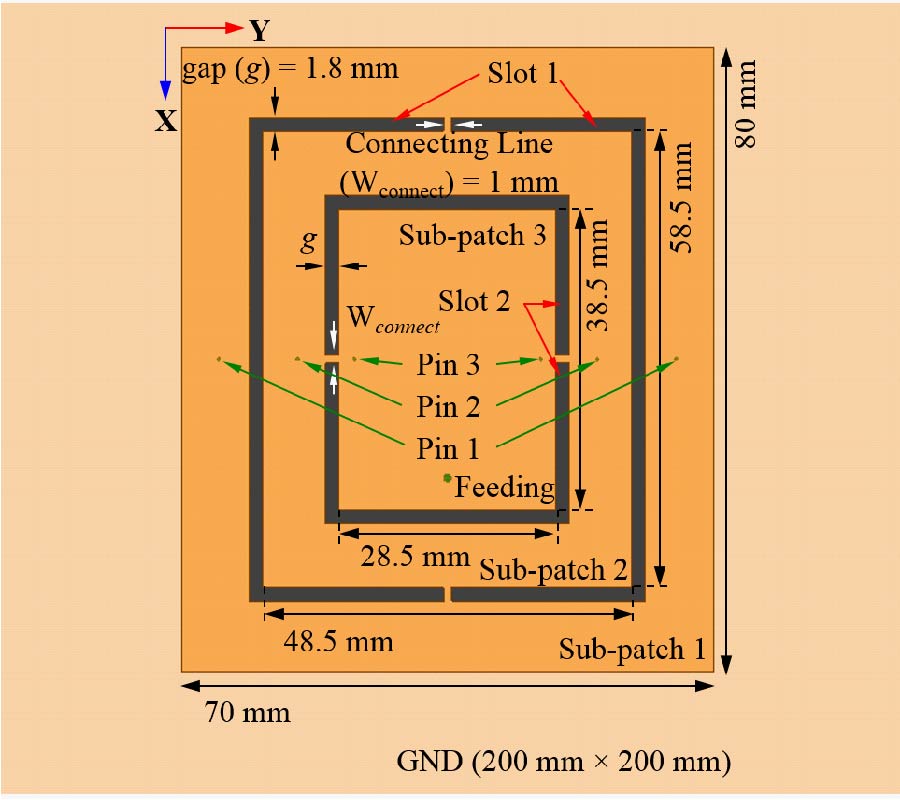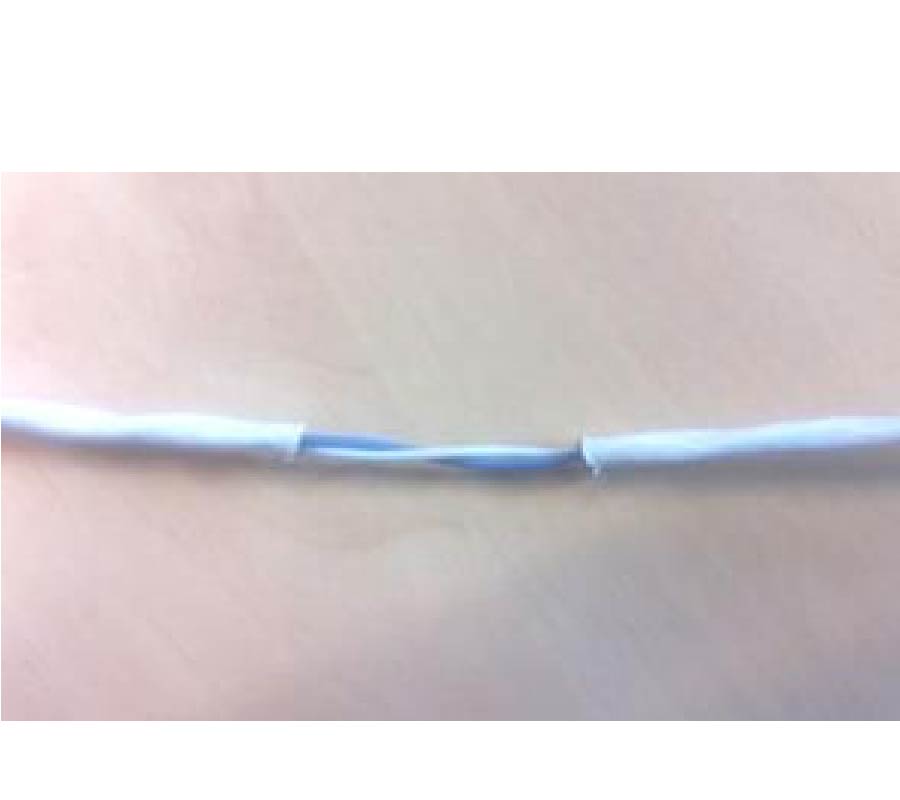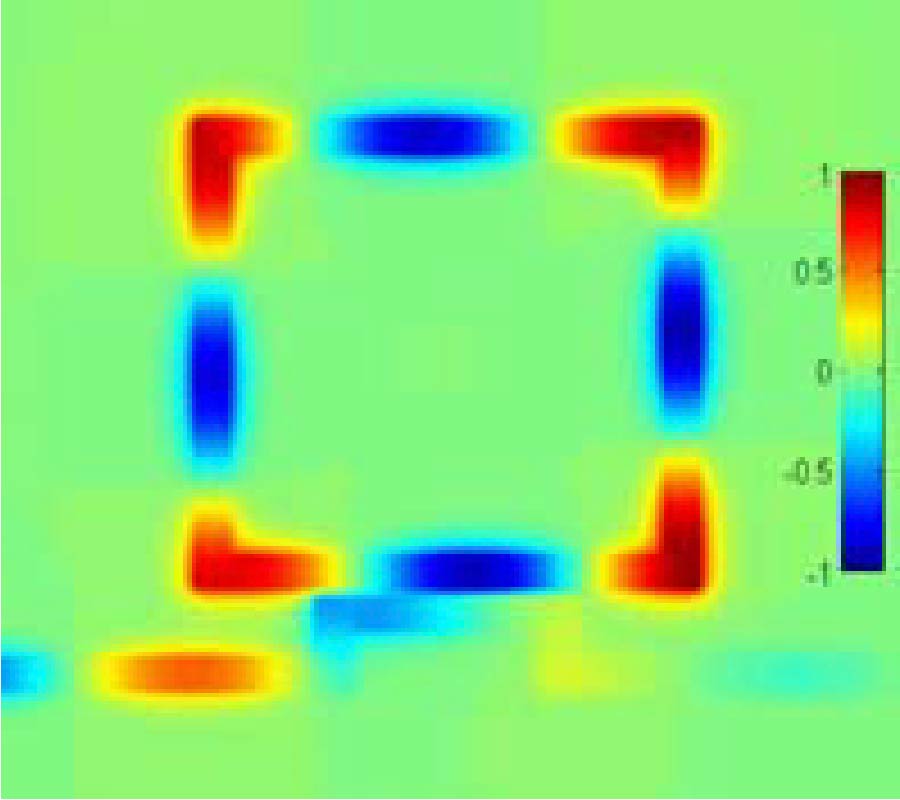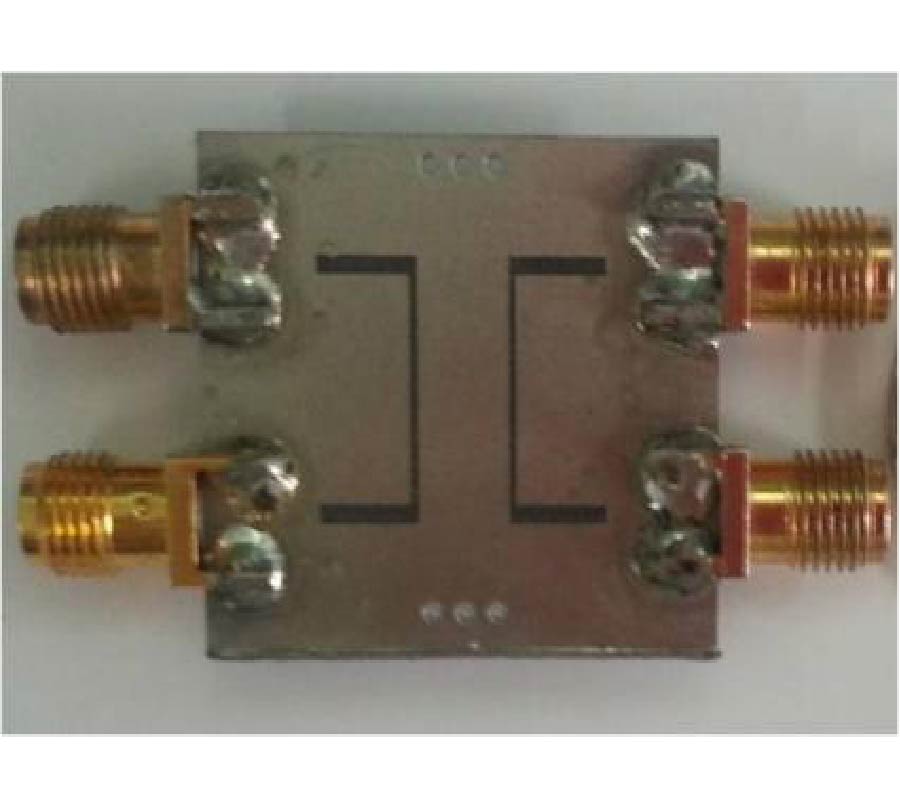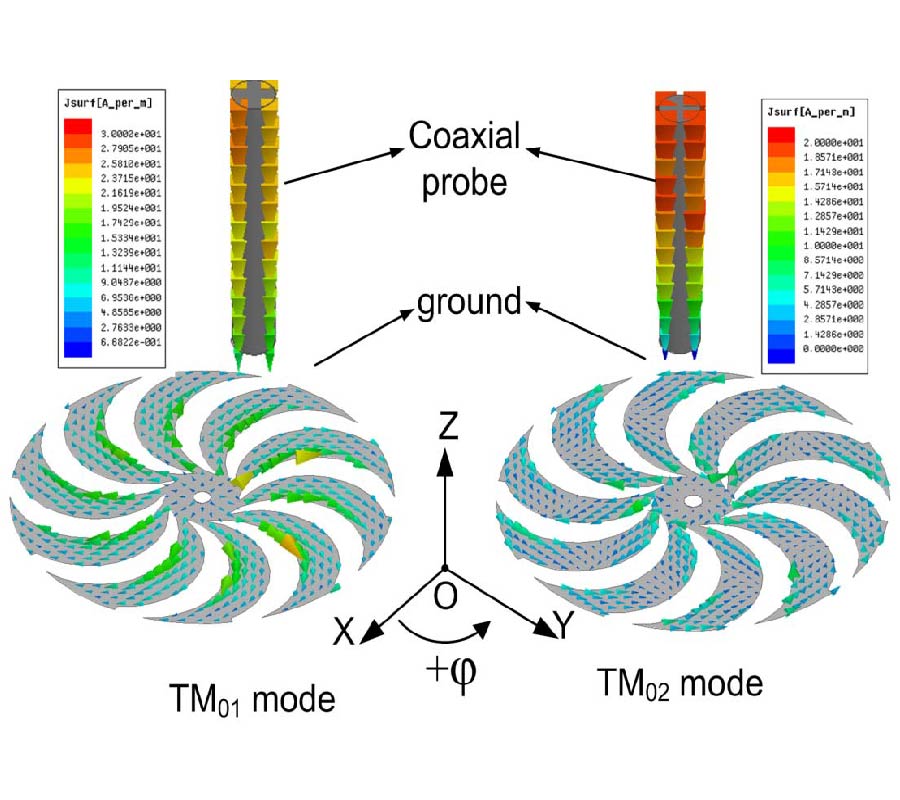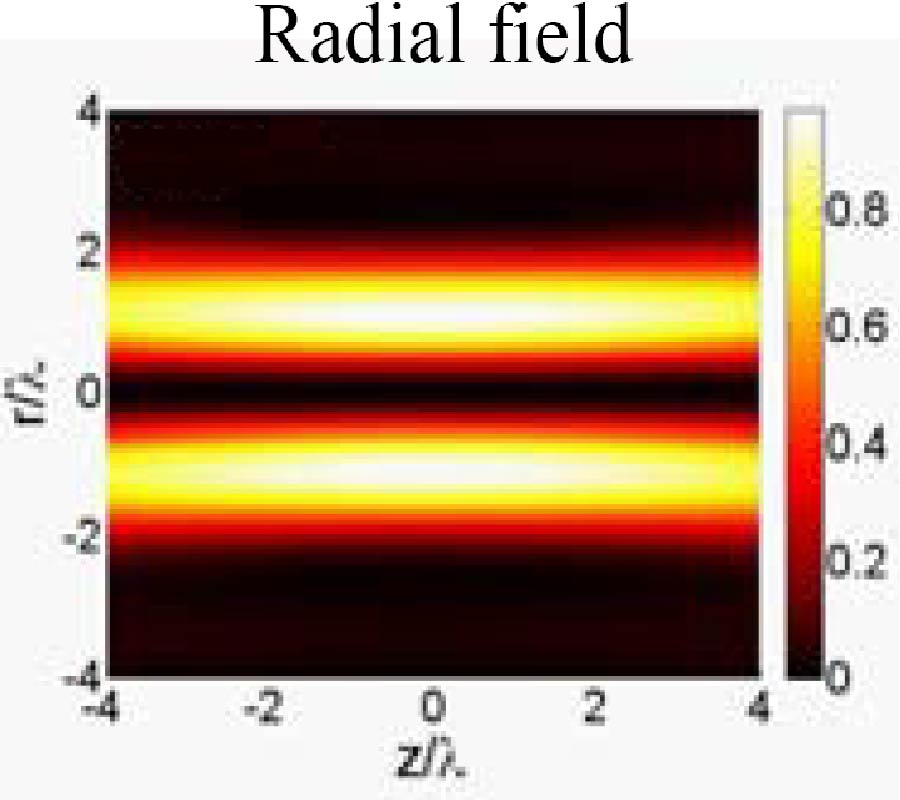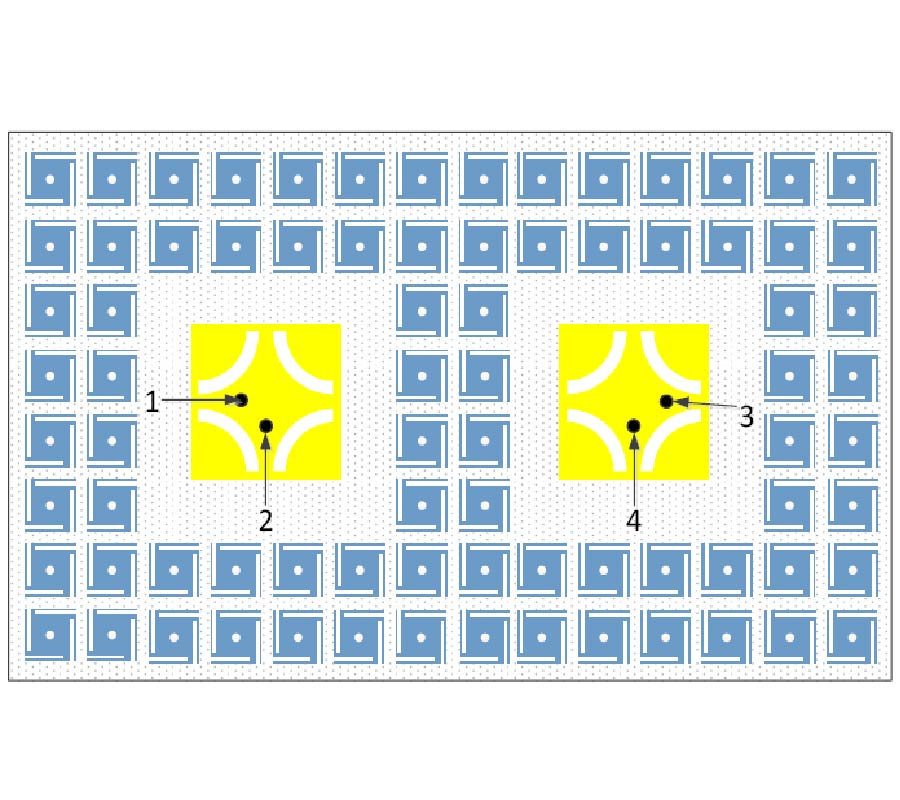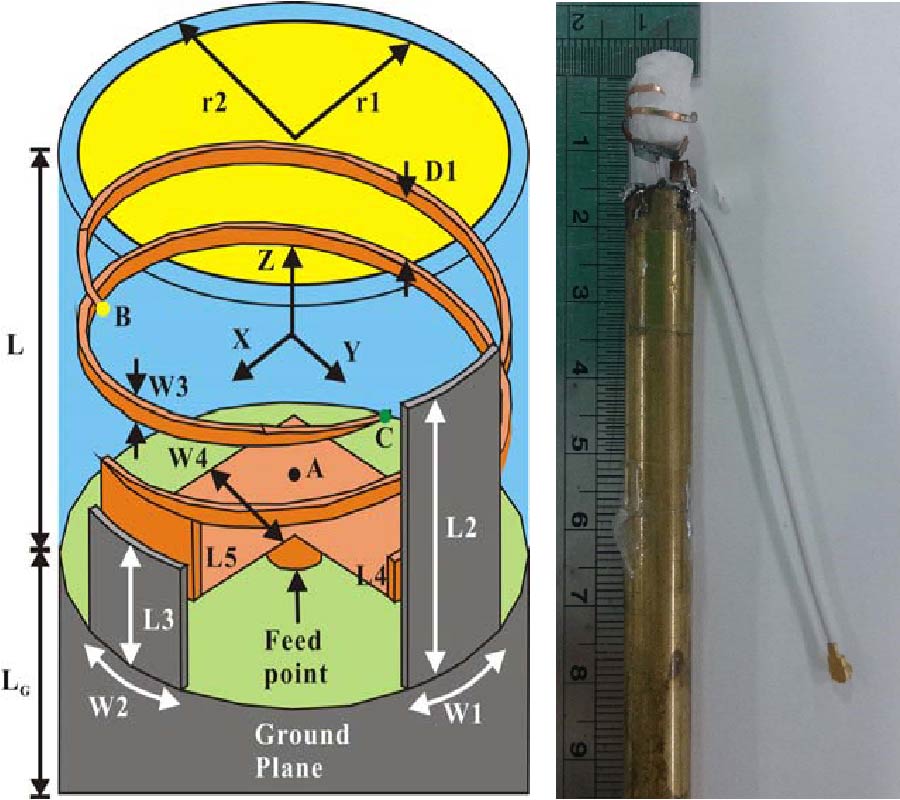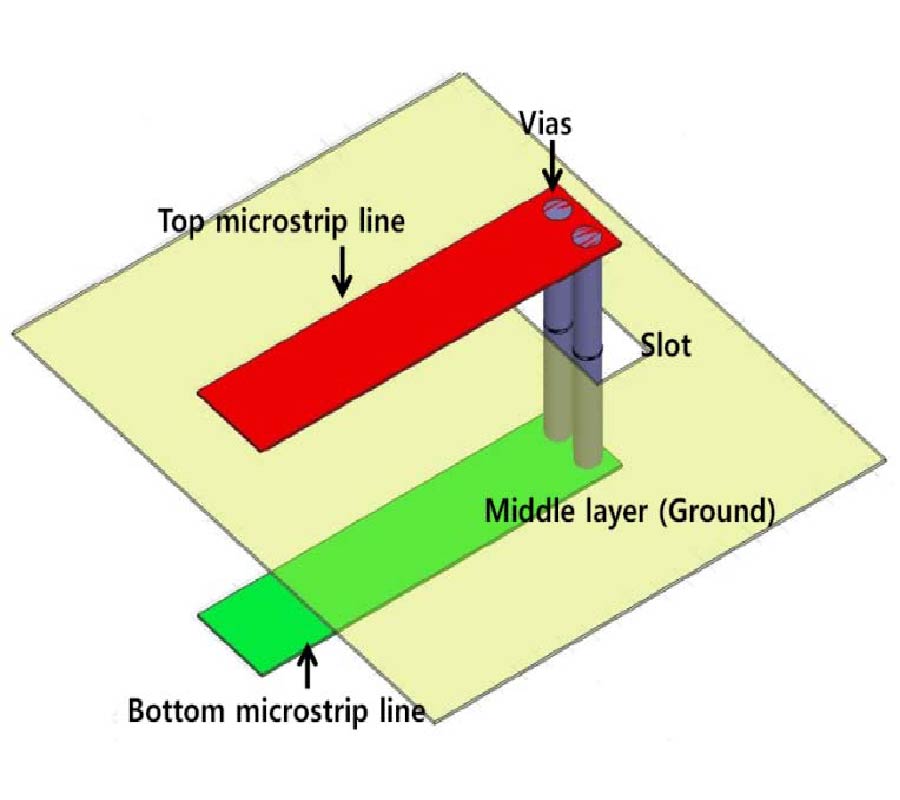2015-03-04 Latest Published
By Liangzu Cao
Lixia Yin
Progress In Electromagnetics Research Letters, Vol. 51, 127-133, 2015
Abstract
This paper presents a tri-band bandpass filter (BPF) consisting of a wide BPF and two narrow bandstop filters (BSFs). BPF is a ninth-order interdigital structure, and BSFs are designed fifth-order series resonators with quarter wavelength transmission line connected. The selectivity of BPF and the bandwidth of BSF are analyzed using simulation software. A tri-band BPF, made of metal cavities, is designed and measured. Three passbands are located in 1.332~1.401 GHz, 1.443~1.458 GHz, 1.506~1.660 GHz, and insertion losses in passbands are less than 2.1 dB. Ratios of Δf40 dB /Δf3 dB are 1.9, 2.67 and 1.33, respectively, and isolation between passbands is more than 75 dB. The good agreement between the simulated and measured results validated the proposed structure.
